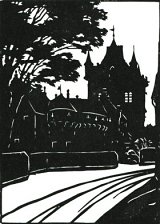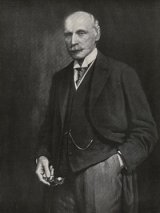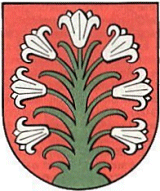|
Where? Liebstadt
is situated south west of Pirna at the entrance of the Osterzgebirges (mountains).
Between Gneishochflächen (380m above sea level) in the valley of Seidewitz,
originated the small town from an irregular shapped village with a triangular
market square. The castle which is built on the half way point of
the mountain even still today adds its charm to the landscape. When? Due
to yet still unexplained reasons the purpose of the castle can be postulated
to have been as a Border fortress in 930 under Heinrich I. In the
13th Century the castle belonged to the Dohnins which can be substantiated
in the title deed of 1286 in which Otto von Dohna and his cousin Otto von
Crafenstein swapped Liebstadt for wineyards in Kötschenbroda and farming
land in Potschappel. After the Dohnaschen era 1402, Meißner
Markgraf Friedrich der Jüngere appointed the brothers Günther
and Heinrich von Bünau as lords of the town and castle.
Why?
Already in the early middle ages there existed three passes through the
Elbtal (Valley) over the heights of the Osterzgebirges (mountain valley)
which led into the Teplitzer Kessel. The middle pass (road) passed
through Liebstadt.
Security and safety against attacks from knights and robbers was expected
from the fortress Liebstadt. In the 15th Century the castle along
with Lauenstein, Weesenstein and Bärenstein formed a bulwark against
attacks from the Hussiten.
How Large?
In comparison with other Saxon castles Kuckuckstein is small. The
total width is 41.5m. The tower reaches a height of 29.5m, the main
building (Tafelhaus) - from the townside - is 26.5m in height. However
the tower is an additional 13m above this. From this differential
it becomes evident that the castle is not built on a Plateau but on a natural
slope of the mountain. Impressive since the strength of the walls
vary from 2.50m to 3.50m in the cellars and on average are 1.5m in the
different buildings.
 Who?
After the already mentioned Lords von Dohna and the Bünaus followed
irrelevant owners like Wedelbusch, Birkholz, Berisch, Hanisch, Francke,
untill 1774 when Hans Carl August von Carlowitz took possession.
Under his family’s ownership the castle experienced its greatest period.
Neogothic extensions were added. 1800 saw the building of the
Freimaurerloge. Who?
After the already mentioned Lords von Dohna and the Bünaus followed
irrelevant owners like Wedelbusch, Birkholz, Berisch, Hanisch, Francke,
untill 1774 when Hans Carl August von Carlowitz took possession.
Under his family’s ownership the castle experienced its greatest period.
Neogothic extensions were added. 1800 saw the building of the
Freimaurerloge.
Carl Adolph, son of Hans Carl August made a name for himself as a patriot
and antagonist of Napoleon. Friendship and common interests with
Freiherrn von Stein, Novalis and Kleist ensured a progressive stance for
the family.
 During 1931 due to total insolvency the castle came under a mortgagee
sale including furnishings and the collection of art. The Industrialist
von Mayenburg from Dresden bought the property who in turn sold it to General
von Leoben who held it until 1945 when it was nationalised. During 1931 due to total insolvency the castle came under a mortgagee
sale including furnishings and the collection of art. The Industrialist
von Mayenburg from Dresden bought the property who in turn sold it to General
von Leoben who held it until 1945 when it was nationalised.
The
Crest
 The Liebstädter town crest - seven lillies on a red background
- has its origins with the Bünaus. The red background reflects
the danger of war, the lillies hospitality to all pilgrims who passed through
Liebstadt on their pilgrimage to Bohemian Monasteries.. The crest
(Kleeblattwappen) - the identity of the castle has been seen in the town
since 1774 when the Family von Carlowitz took up residence. This
crest from the wide flung family is still today evident in many districts
of Saxony. The Liebstädter town crest - seven lillies on a red background
- has its origins with the Bünaus. The red background reflects
the danger of war, the lillies hospitality to all pilgrims who passed through
Liebstadt on their pilgrimage to Bohemian Monasteries.. The crest
(Kleeblattwappen) - the identity of the castle has been seen in the town
since 1774 when the Family von Carlowitz took up residence. This
crest from the wide flung family is still today evident in many districts
of Saxony.
What Style?
Besides the tomen foundations/walls and altars one can find in the yard
and tower gothic elements in the form of windows and doors. The influence
of Arnold von Westfalens (Albrechts castle Meißen - Vorhangbogenstil)
is unmistakable.
The additions and changes are neogothic, sentimentalgothic, and romantic
old German, so that the entire complex gives an impression of a complete
entity.
Who was Geissler?
1790 - the ideas generated by the French Revolution were taking shape
in Germany. Christian Benjamin Geissler formulated his “Pro Memoria”,
and eight point thesis on the improvement of conditions of ordinary men.
Geissler organised a peasant protest march to Dresden Pillnitz which
initially met success. However, he was arrested and the protest was
crushed. After 15 years of incarceration at Torgau and an adventurous
escape and a new arrest he came under the protection of Carl Adolph von
Carlowitz which he enjoyed until his death. A plaque has been erected
at the old Geissler house at Pirnaer Straße 10.
What Changes?
After the Castle was nationalised the rooms and cellars were used for
storage. In 1952 the castle went to the city.
In 1962 restoration began under the Institute of Historical Restoration.
What else?
Weiße Marter
First of all, the “Weiße Marter” near the “Roten Vorwerk” on
the road Berthelsdorf-Seitenhain, first mentioned in the 17th Century.
Previously equipped with a figure of Christ made of stone, this pillar
of prayer served as a rest area for the pilgrims travelling to Bõhmen.
Stone Crosses
The Crosses of sin; from the seven Crosses of Liebstadt, five were
washed away by the great floods of 1804. Two were preserved.
A third was found during Mason work. All three stand by the Glashütter
road.
930 / 40 - Possible date
of the castles founding by Heinrich I
until 1286 Burggrafen von Dohna
1410
- For military exploits the castle is transfered from Markgraf von
Meißen to Günther and Heinrich von Bünau
1655
- new owner of castle becomes Detlef von Wedelbusch
1691
- bequeathed to Cuno Christoph von Birkholz
1743
- sold for 60 500 Taler to the shipping and mercentile magnate Hanisch
1751
- sold for 75 000 Taler to the Kommerzienrat Francke
1774
- Mortgagee sale to Hans Carl August von Carlowitz for 40 407 Taler
1931
- Mortgagee sale to Heinsius von Mayenburg for 244 000 RM
1932
- Managed through General Major Eckhart von Loeben
1945
- Nationalised - becomes the property of the Ministry for Land and
Forestry for the state of Saxony
1952
- Property of the City Council of Liebstadt |